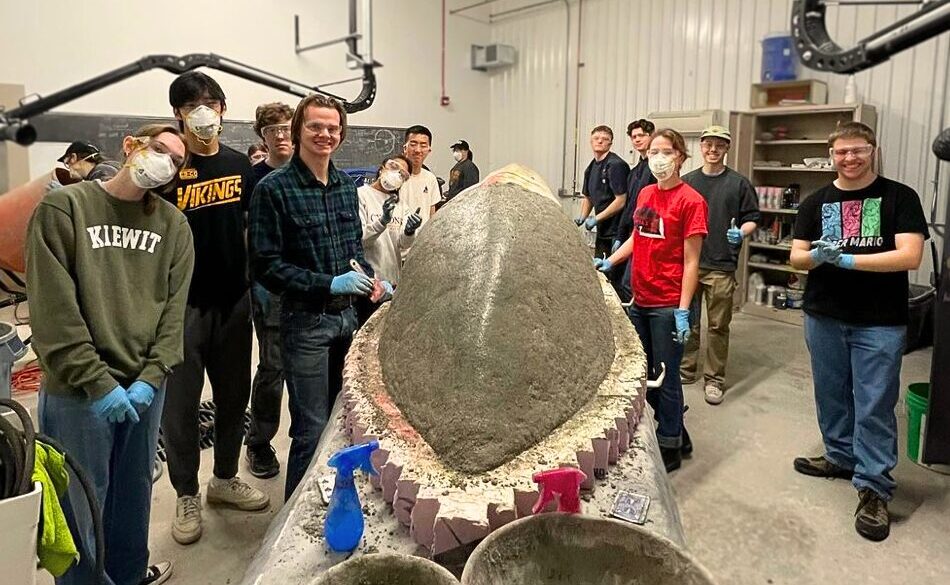Team chemistry makes Concrete Canoe built to last
Author: Anna Keplinger
Author: Anna Keplinger

Since 1973, ASCE Concrete Canoe has been a close-knit group of students working towards creating the perfect vessel. The objective is to plan, design, and execute a canoe made of concrete, and communicate how they would manufacture it for a company. Competing at the National ASCE Concrete Canoe Competition, they will race other college teams to determine a champion.
Violet Stayner and Zachary Glowczynski, seniors in civil engineering and the two co-captains, take the lead in ensuring that the team meets each deadline. They make time for fun, too, “it’s a designated time to get to know each other and bond beyond the canoe,” said Stayner.
“Most of my friends in the department I’ve met through Concrete Canoe,” added Glowczynski.
Preparing to “sting” the competition
The team moved to a new space this year to accommodate their growing team. One unexpected test was the large, active hornet’s nest they found upon arrival. Once they solved that issue, the team was ready to start with newfound inspiration. After facing disqualification at last year’s competition, the team is determined to get it right with their Top gun and club warehouse tenant-themed vessel, The Hornet.
The process does not happen overnight. The design, sketching, and planning are where it begins. Next, they build the mold from foam, cross-sectioning, gluing, and shaving it to the perfect shape. One of many challenges is mixing the aggregate and cement to find the required consistency and pouring it on the mold before it sets. The team then captures the journey in a complete technical proposal. This year, the document is 18 pages long.
“Step by step, we work together to get it done. The key is being understanding of people’s time and allowing them to stop by and help when they can,” said Glowczynski.
It takes 28 days to cure. They then get to let their creativity fly with painting, signage, and matching T-shirts.
Real-world experience and establishing lifelong connections
Each step in creating the canoe lends to different strengths, which is why Stayner and Glowczynski believe it is important to involve anyone who’s willing to get a little dirty.
“We teach what you don’t know and learn from others as well. Because there are multiple majors, and people in different points in their degrees, different perspectives and skills make us all better.” Said Glowczynski.
Universities across America have groups like this. ASCE Concrete Canoe is a shared experience spanning generations and a way to create connections and open doors as students seek full-time employment.
“Interviewing for an internship I secured, I had ASCE on my resume. The interviewer’s past involvement in his college team allowed for a fast connection,” Glowczynski explained.
Both captains first tried Concrete Canoe after the club visited their CE 120 learning community course.
“Being a transfer student, I came here without knowing what was available to me. I didn’t know many people either, so when ASCE brought Steel Bridge and Concrete Canoe into my CE 120 class, I knew I needed to give one a shot,” said Stayner.
“Similar to Violet, I was a peer mentor in CE 120, and joined after they presented, too! A lot of other members have either joined through friends or the same way we did,” said Glowczynski.
Concrete Canoe has recruiting events throughout the year and welcomes new members often. Students from any major are welcome to join. To compete as a rower in the Symposium, students must be active ASCE members. Check out their website for more club information.